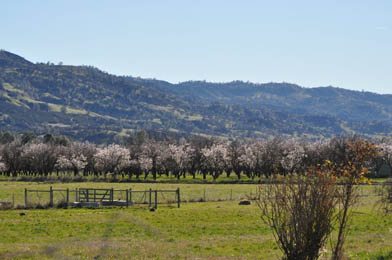Farming In Frost
- By FruitGuys Staff
- Reading Time: 3 mins.
 Image courtesy of Full Belly Farm, Guinda CA
Image courtesy of Full Belly Farm, Guinda CA
As the weather warms and dries a little in February and March, it’s easy to think that spring has arrived and therefore the warm weather crops should be close behind. But the delay from the greenhouse or the field to your FarmShare is 2- 3 months or more. Some of the leanest months for produce are in early spring, especially in the colder seasons
Those of us working to bring quality, seasonal, local produce to our customers year-round have to plan accordingly. Different farms find ways to work through the thin season. Some crops do better than others depending on the year and our systems for staying afloat through the winter are always evolving. Here is some insight into the winter and spring months from three of our farms.
Get tips for your office
Be an office hero!
From Jim Eldon at Fiddler’s Green Farm
To have new crops in March requires either successfully overwintering Fall-planted vegetables, like carrots or peas, or an opportunity to plant in January. But January is usually either too wet or too cold, or both. Even if it’s possible to plant, many annual vegetables are day-length sensitive and will go to flower before maturing to harvestable size.
This January of 2013 the average low at the farm was a little over 25 °F., with a low for the month of 14 °F. There were only six mornings above freezing, clustered around the two brief showers of rain we had. No vegetable seeds will germinate in soils during such cold. Even established crops aren’t growing – they’re just surviving. Asparagus starts appearing in the stores and at the market, but since the emergence of the asparagus is soil-temperature dependent, my season is much later than the Delta and we will not be harvesting any spears until the end of the month, with the season peaking in late April.
From Paul Muller at Full Belly Farm
We have a four-season strategy on the farm to have crops to sell and to be able to pay the bills based upon year-round cash flow. The strategy also addresses year-round employment for our workers. It was evident from the get-go that we needed crops to put into storage in order to have crops to sell in December, January, February and sometimes March. Walnuts, almonds, winter squash, root crops, potatoes, apples, dried fruit, and oranges were part of a long list that allowed us to have both sales and paychecks even in the coldest of winters. Read the full text of Paul’s article here on the Full Belly website
Want fruit for your office?
Get your office a free sample TODAY!
From Matt Mosen at Riverdog Farm
There are two thermometers on the outside of the farm office building, one facing west and the other facing east. Arriving to work early last week as the sun was coming up, Brian, our resident Jack-of-all-trades, noticed a 30-degree difference on the two meters: 58 in the sun, 28 in the shade. By the second half of the week an insulating cloud cover rolled in, the humidity was higher, and the temperature difference not so great. These two weather patterns will determine what the next few weeks will bring. If the intense (winter intense, at least) sun warms the soil, we’ll see asparagus by mid-February. If the sun is diffused by low lying cloud cover, early spring crops will be a few weeks still to come. We’ll be planting our final round of winter-plant brassicas in the next week or two. Tomatoes will be seeded in the greenhouses any day now for late April transplanting. See all this week’s news from Riverdog Farm.
We are grateful to all of our members who make the best of the winter and spring produce, which is bountiful and beautiful in its own way. In the upcoming future, we’ll be sharing with you more greens, brassicas, citrus, roots stored from the fall, and the nuts and dried fruits from our diverse farms. We can’t wait to bring you the new spring crops like asparagus and peas as they roll in!
Want farm-fresh fruit?
We've got you covered.


